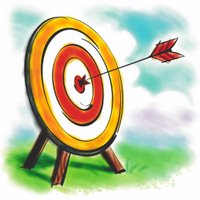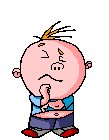Goals & Defining “Accomplishments”
 If you asked a room of 20 pool players to share their biggest accomplishment, you will hear several answers. If you shared your own accomplishments, some may agree with your success. Some others may have a different idea of what is important to them. One player may feel proud of accomplishing top shooter in their league. Another may feel it’s an accomplishment to just draw the cue ball two inches. Many will agree that winning a national championship is a pretty big feat. And for some, setting specific goals and reaching them are how they define an accomplishment.
The only person that can define an accomplishment for you is YOU. I spent two years working with The Monk, learning all that I know today about this great game. But, it wasn’t until I defined my own goals and accomplishments that I was able to achieve them for me, not for anyone else. It was then that I realized my own dreams and accomplishments were not, and did not need to be, the same as someone else’s. Nor, could I allow anyone to set them for me. I had to define them for myself.
If “winning” tournaments is an accomplishment to you and you set a goal to win as many tournaments as possible, this is an easy task to complete. Simply only play in tournaments where you know you’re the favorite to win. You will never be challenged and you will always win. In this case, you will have accomplished your goal of winning many tournaments. However, if your goal is to become a better player, it’s critical to set specific benchmarks (i.e. stopping the cue ball, drawing the cue ball, running a rack…).
Once you define your specific, attainable goals, each time they are reached, you can check it off your list and move on to the next one. Each time you check off something, feel proud of yourself. You just accomplished something that you set out to do! Who cares if your accomplishment is to run four consecutive balls when your teammate’s accomplishment is to break and run four consecutive racks?! You still accomplished what you set out to do.
A few nights ago, I was working on The Monk’s “Keeping the Cue Ball off the Rail” exercise where you spread all 15 balls on the table and run them out in any order without letting the cue ball touch a rail. I shot 116 balls without a miss and felt just as excited as winning the 9 ball event last month. I did touch two rails, but it was my record high run for this exercise. If I defined an accomplishment only as “winning” something then I could not have been proud of my hard work. I would not have been satisfied with just shooting well without winning something. BUT! Since my goal is not only to win but to play strong, I was just as thrilled with my results. To me, it was as big of an accomplishment as any national title.
The thrill of doing what you set out to do is an incredibly rewarding feeling. It’s a feeling you may never experience if you don’t set yourself up for it. Design goals that are tangible and set timelines for them. These goals may be shooting 50 stop shots without a miss, or breaking and running a rack of 9 ball, or being top shooter in your league, or winning a specific weekly tournament. Challenge yourself with new goals and afford yourself the opportunity to accomplish them. Because, trust me, the mission is to accomplish the goals, right? Just define it and do it.
If you asked a room of 20 pool players to share their biggest accomplishment, you will hear several answers. If you shared your own accomplishments, some may agree with your success. Some others may have a different idea of what is important to them. One player may feel proud of accomplishing top shooter in their league. Another may feel it’s an accomplishment to just draw the cue ball two inches. Many will agree that winning a national championship is a pretty big feat. And for some, setting specific goals and reaching them are how they define an accomplishment.
The only person that can define an accomplishment for you is YOU. I spent two years working with The Monk, learning all that I know today about this great game. But, it wasn’t until I defined my own goals and accomplishments that I was able to achieve them for me, not for anyone else. It was then that I realized my own dreams and accomplishments were not, and did not need to be, the same as someone else’s. Nor, could I allow anyone to set them for me. I had to define them for myself.
If “winning” tournaments is an accomplishment to you and you set a goal to win as many tournaments as possible, this is an easy task to complete. Simply only play in tournaments where you know you’re the favorite to win. You will never be challenged and you will always win. In this case, you will have accomplished your goal of winning many tournaments. However, if your goal is to become a better player, it’s critical to set specific benchmarks (i.e. stopping the cue ball, drawing the cue ball, running a rack…).
Once you define your specific, attainable goals, each time they are reached, you can check it off your list and move on to the next one. Each time you check off something, feel proud of yourself. You just accomplished something that you set out to do! Who cares if your accomplishment is to run four consecutive balls when your teammate’s accomplishment is to break and run four consecutive racks?! You still accomplished what you set out to do.
A few nights ago, I was working on The Monk’s “Keeping the Cue Ball off the Rail” exercise where you spread all 15 balls on the table and run them out in any order without letting the cue ball touch a rail. I shot 116 balls without a miss and felt just as excited as winning the 9 ball event last month. I did touch two rails, but it was my record high run for this exercise. If I defined an accomplishment only as “winning” something then I could not have been proud of my hard work. I would not have been satisfied with just shooting well without winning something. BUT! Since my goal is not only to win but to play strong, I was just as thrilled with my results. To me, it was as big of an accomplishment as any national title.
The thrill of doing what you set out to do is an incredibly rewarding feeling. It’s a feeling you may never experience if you don’t set yourself up for it. Design goals that are tangible and set timelines for them. These goals may be shooting 50 stop shots without a miss, or breaking and running a rack of 9 ball, or being top shooter in your league, or winning a specific weekly tournament. Challenge yourself with new goals and afford yourself the opportunity to accomplish them. Because, trust me, the mission is to accomplish the goals, right? Just define it and do it.




